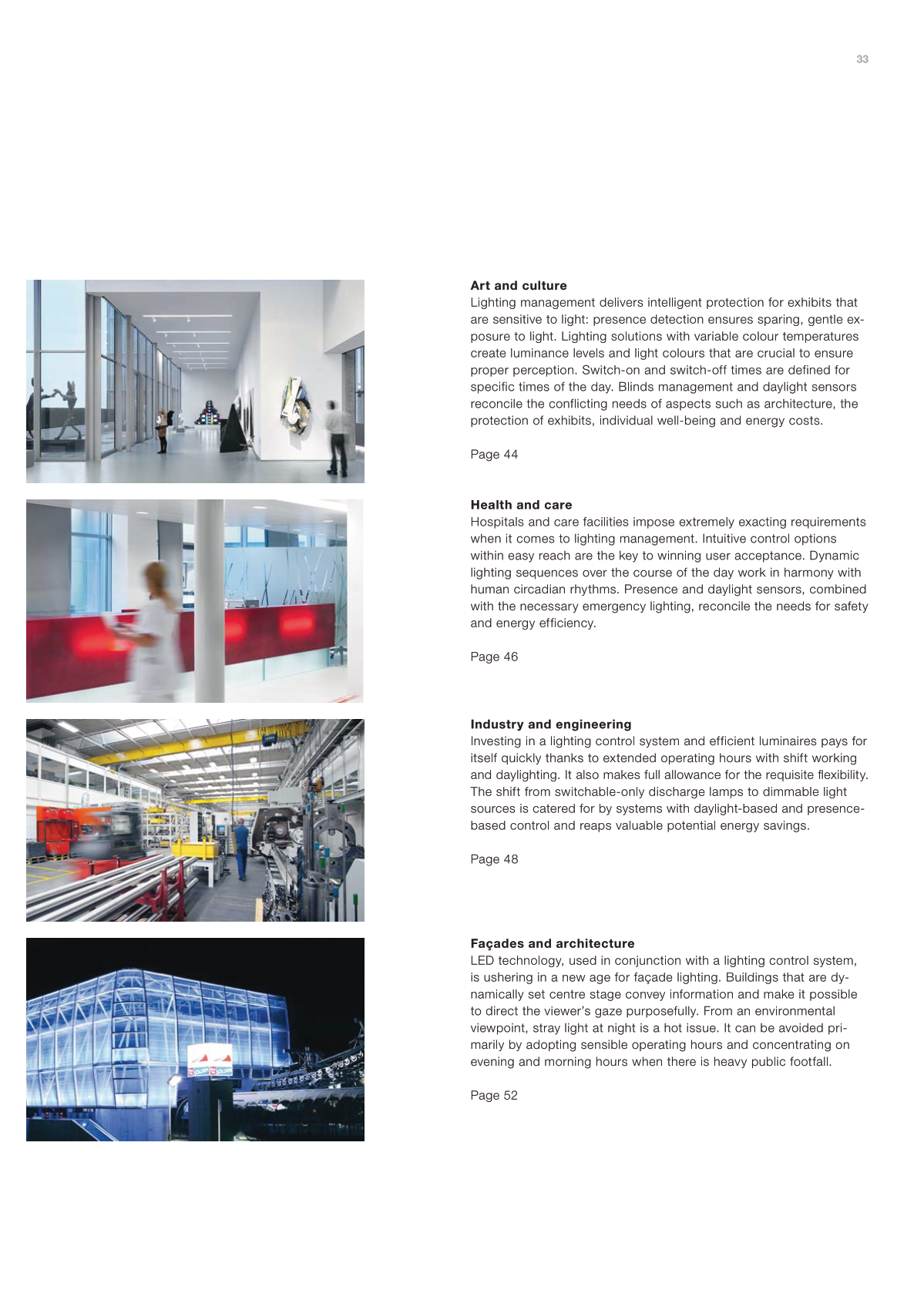33
Art and culture
Lighting management delivers intelligent protection for exhibits that
are sensitive to light: presence detection ensures sparing, gentle ex-
posure to light. Lighting solutions with variable colour temperatures
create luminance levels and light colours that are crucial to ensure
proper perception. Switch-on and switch-off times are defined for
specific times of the day. Blinds management and daylight sensors
reconcile the conflicting needs of aspects such as architecture, the
protection of exhibits, individual well-being and energy costs.
Page 44
Health and care
Hospitals and care facilities impose extremely exacting requirements
when it comes to lighting management. Intuitive control options
within easy reach are the key to winning user acceptance. Dynamic
lighting sequences over the course of the day work in harmony with
human circadian rhythms. Presence and daylight sensors, combined
with the necessary emergency lighting, reconcile the needs for safety
and energy efficiency.
Page 46
Industry and engineering
Investing in a lighting control system and efficient luminaires pays for
itself quickly thanks to extended operating hours with shift working
and daylighting. It also makes full allowance for the requisite fl exibility.
The shift from switchable-only discharge lamps to dimmable light
sources is catered for by systems with daylight-based and presence-
based control and reaps valuable potential energy savings.
Page 48
Façades and architecture
LED technology, used in conjunction with a lighting control system,
is ushering in a new age for façade lighting. Buildings that are dy-
namically set centre stage convey information and make it possible
to direct the viewer’s gaze purposefully. From an environmental
viewpoint, stray light at night is a hot issue. It can be avoided pri-
marily by adopting sensible operating hours and concentrating on
evening and morning hours when there is heavy public footfall.
Page 52


